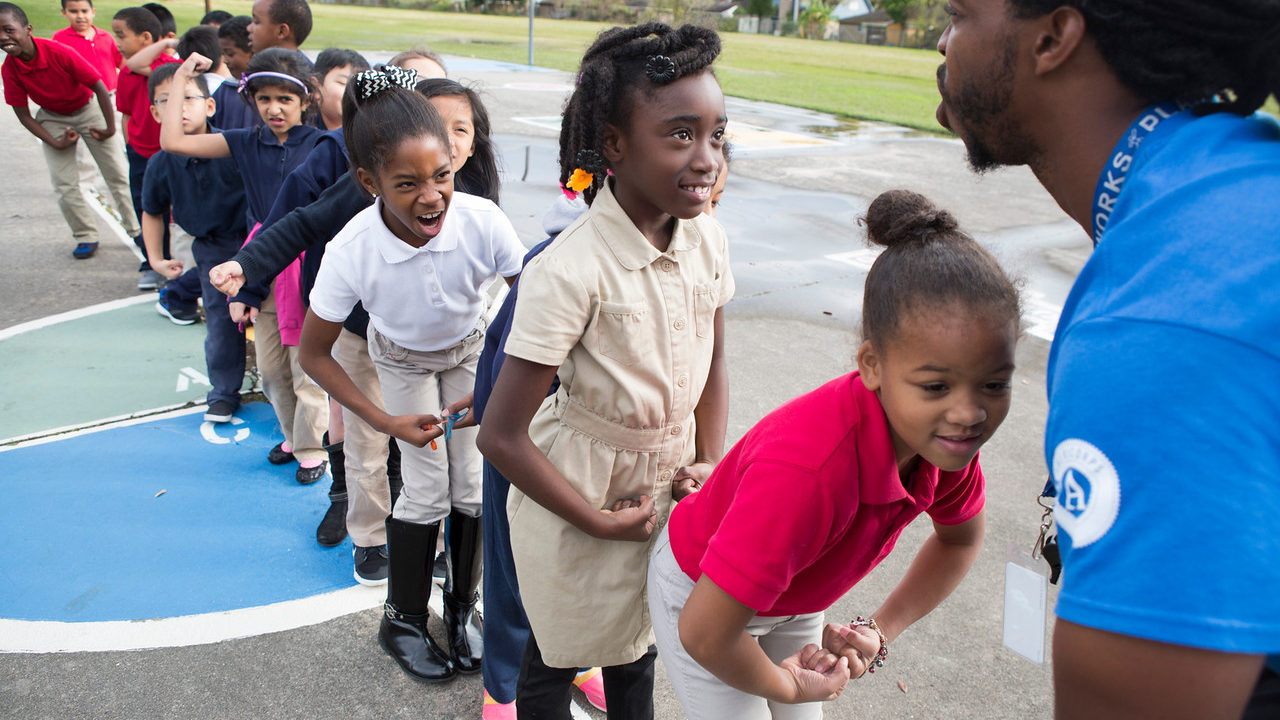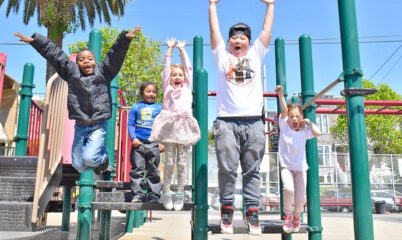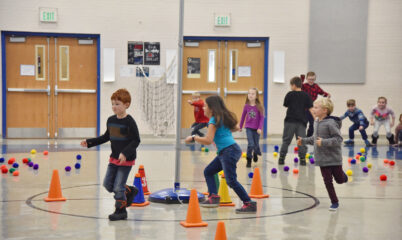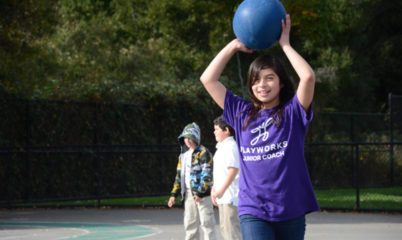The Laureus Sport for Good Foundation connected Playworks with Laureus Ambassador Bob Lujano, a US Paralympic athlete, a rugby national champion, and a member of the Lakeshore Foundation team. Playworks is proud to present tips from Bob Lujano for adapting games to make play possible for students with special needs.
Adapting Games for Students with Autism
- For students with Autism, additional visual cues can be even more important. For example, could you chalk each square of foursquare in different colors?
- Many students with Autism may be sensitive to noise. Monitor students for signs of stress from noise and adjust if possible. For example, we know that getting super loud can be fun sometimes, but can you also create time when clapping, cues, etc. are softer? Then, if you want to have a loud moment, you can develop a system with the student to give him or her a heads up.
- Students with Autism may be more sensitive to textures. Consider changing equipment if needed. For example, students may prefer to close their eyes instead of wearing a blindfold. Additionally, for some games that include stuffed animals, like Bob the Bunny, students may prefer an object with a different texture.
- All the guidelines in my blog Adapting Games for Students with ADHD can help students with Autism play as well.
Blogs in this series:
- Tips for Making Play Access Easier
- Adapting Games for Students with ADHD
- Adapting Games for Students with Autism
- Adapting Games for Students in Wheelchairs
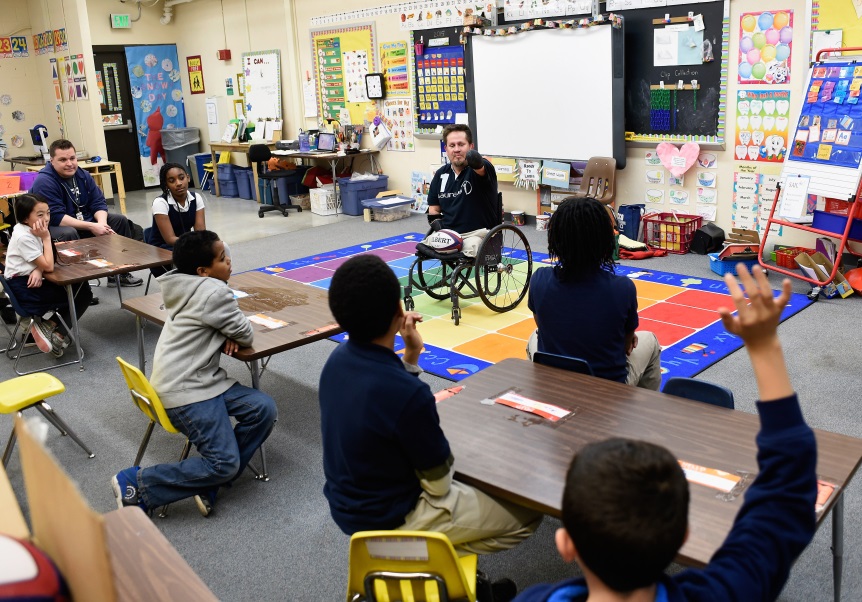
Laureus Sport for Good Foundation USA Ambassador Bob Lujano meeting with Playworks Junior Coaches in Minneapolis.
